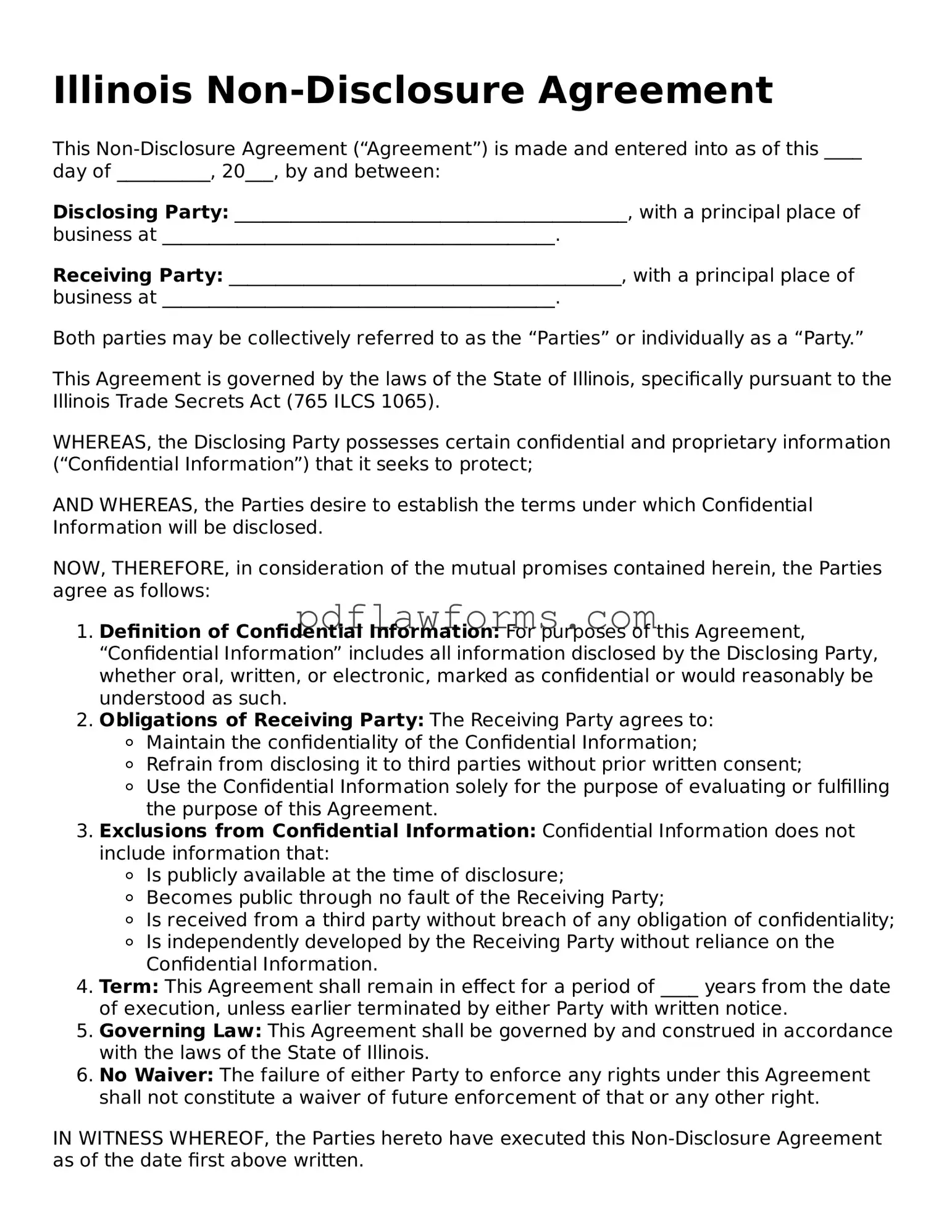Non-disclosure Agreement Form for the State of Illinois
A Non-disclosure Agreement (NDA) in Illinois is a legal document that helps protect confidential information shared between parties. It ensures that sensitive details remain private and are not disclosed to unauthorized individuals. If you need to safeguard your information, consider filling out the NDA form by clicking the button below.
Make My Document Online
